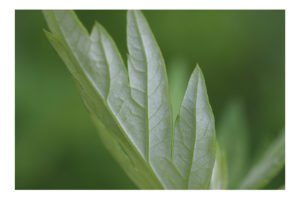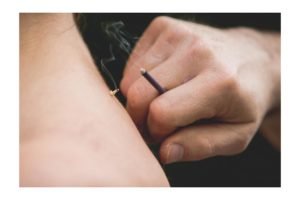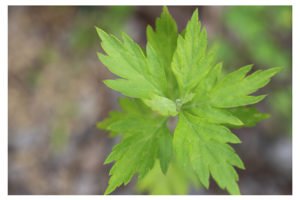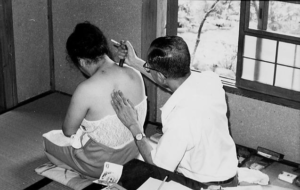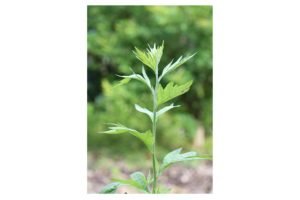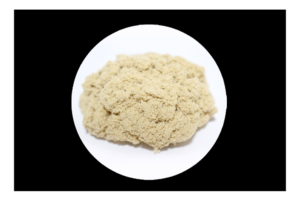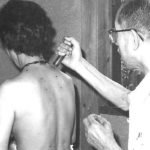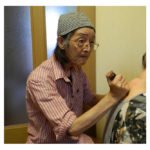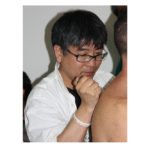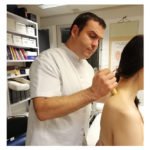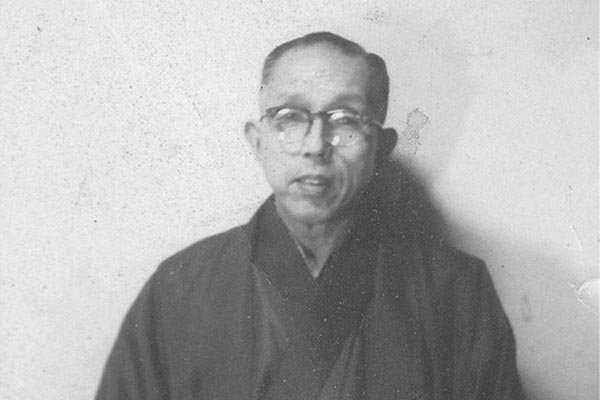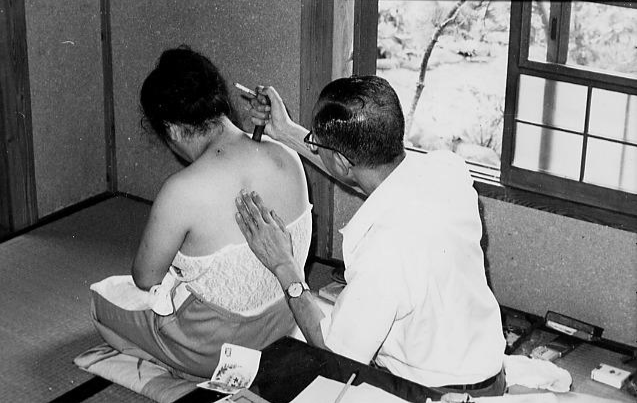Your cart is currently empty!
Japanese Moxibustion Foundations Online: A two-part recorded webinar series
Recorded Webinars – Presented by Felip Caudet
CPD approved/pre-approved by AACMA | Acupuncture NZ | NZASA
Part 1: Moxibustion Theory + Technique
Recorded Webinar- Recorded on Sunday 24th May 2020
4 Formal CPD Points*/4 Hours
Part 2: Palpation + Point Location in Moxibustion
Recorded Webinar- Recorded on Sunday 7th June 2020
4 Formal CPD Points*/4 Hours
Online: Recorded Webinars- hosted in Sydney, Australia and broadcast from Barcelona, Spain- May/June 2020
*Formal CPD Certificates for the 2 Part Series are provided at the completion of the mandatory Online CPD Quizzes that are provided at the end of each section of the recorded webinar series.
365 Days Access + Course Quiz + Downloadable Formal CPD Certificate upon completion
AU$ 200.00 + AU$20.00 GST for this two-part series.
(GST Applicable on Registrations from Australia Only – International Registrations are GST Free)
Payment Options:
Secure Online Credit Card Payment via Stripe: Select “Pay by Credit Card” at checkout | Instant Access to Online Courses available via this payment method.
Bank Transfer: Select “Direct Bank Transfer” at checkout. | Access to Online Courses is granted only after the funds are cleared.
If you registered for complimentary access to an online program, it will be enabled for access instantly after you checkout.
- Introduction
- About the Presenter
- A Line of Transmission
- Course Curriculum
- Seminar Materials
- Who Should Attend?
- Seminar Attendance Details
- Price/Payment Plans
- Cancellation/Refund Policy
- CPD Points
- Presenter's Media
- Seating Information
“An excellent online learning opportunity for those wishing to study Japanese moxibustion. For those starting at the basics, or those wanting to take their current skillsets to the next level, Felip Caudet is the moxibustion instructor who can take you there. With this short and clinically applicable program, you can start making moxibustion one of your most powerful tools, for amazing clinical results.”
Peter Scarselletti
Founder/Director
Qiology
2020 brought with it some interesting challenges for us all.
During 2020, Qiology took the initiative to provide a number of high quality, affordable, and clinically applicable online Continuing Professional Development (CPD) events to meet the needs of the acupuncture/oriental medicine profession across the globe.
In May/June 2020 Qiology invited Felip Caudet, international moxibustion instructor in the line of transmission of the of the Fukaya Style of Moxibustion, to conduct a unique online training, which was recorded and is now available as an online learning program:
Japanese Moxibustion Foundations Online: A two-part recorded webinar series
This program is particularly exciting as it provides the acupuncture/oriental medicine profession with a high-quality online opportunity to learn Japanese moxibustion methods, and skills from an international moxibustion instructor. It is commonly understood that moxibustion is an extremely powerful clinical tool, however, education in moxibustion at an undergraduate level is severely lacking.
This 2-part online course will provide you with a balance of theory and demonstration, and will also feature unique practical exercise sections where you will follow the guidance of the instructor with methods of technique development from your home or clinic while you watch. Each recorded webinar includes downloadable webinar notes, and includes Q+A segments with the instructor, which answered some of the important questions from participants. At the end of each part of the 2-part series, you will be provided with a CPD quiz, and upon quiz completion, you will be provided with a formal CPD certificate.
Part 1 and Part 2 of the recorded webinar series cover the 2 major pillars of Japanese moxibustion practice to give you the skillsets to craft effective moxibustion treatments.
1 year online access is included with your registration for the 2-part series. For more information on this online series, please see below, and in the “Course Curriculum” tab.

“Moxibustion is a sophisticated method of treating the body from an Oriental Medicine perspective, which can have extremely powerful clinical results if practiced correctly. However, it involves a lot of hand dexterity, coordination, and skill to perform correctly, and these skills must be taught, then developed, and then refined further under the guidance of a qualified teacher who embodies this level of skill. Furthermore, to correctly perform moxibustion, the practitioner must understand how to correctly palpate the various areas of the body to find ‘Live Moxa Points’ and also know the different palpation styles required to do so, which informs the specific technique to be applied, and for what purpose. The practitioner then must correctly form moxa cones/grains or utilise other moxa methods to stimulate the live point/zone/area, and apply the correct technique and number of cones/grains or the correct amount of heat stimulation to create a change in the treatment zone to effect a treatment.”
We consider this an essential recorded webinar series for those wishing to create solid moxibustion foundations – students, and those new to Japanese moxibustion (okyu) who wish to be taught the archetype of correct moxibustion techniques and methods, to start them off on the right track for all future practice.
What about those who have been practicing moxibustion for years? What about those who have been practicing with moxa recently, and have attended some basic training?
In this case, we consider these recorded webinars as essential training to refine your moxibustion technique, remove any incorrect methods and practices or errors, and set you on a path of self-development and refinement of your moxibustion technique over your practicing lifetime to rapidly improve your effectiveness in treatment.
In summary, these recorded webinars are important to solidify the foundations for practitioners and students at all levels of moxibustion practice to ensure a certain level of practice.
But most importantly, these recorded webinars teach you when and why you should be using moxibustion instead of acupuncture in your treatments, and which specific moxibustion technique to use. This leads to a rapid improvement in clinical results.
The techniques of moxibustion can be graded from very soft (subtle techniques) to very strong (physical and structural techniques). The heat of the moxibustion is understood through an energetic concept (Qi supplementation or dispersion) and not through thermal concepts.
Tonetsukyu (Rice Grain Moxibustion) and Chinetsukyu (Heat Perception Cone Moxibustion) – the primary techniques covered in these trainings are the most popular and effective moxibustion techniques that exist in the Japanese moxa universe.
Chinetsukyu techniques are for the surface levels, and Tonetsukyu techniques are for deeper levels of the body.
The various techniques consist of the application of moxa cones/grains of various size/density (some large, some tiny, and in between; some densely packed, some loosely packed) with differing grades of moxa on specific points. These techniques allow one to regulate the energetic, blood and lymphatic movement in the tissues, working on the so-called ‘living/live’ points.
Unfamiliar to many, the palpation methods for Tonetsukyu and Chinetsukyu are completely different, and learning of both palpation methods is required to apply these foundation techniques correctly and effectively.
Prioritising the development of manual sensitivity in the correct search for “living points,” and applying the cones/grains of high-quality moxa correctly, a level of clinical efficacy without equal is achieved.
The strength of the correct moxibustion technique is that it is aimed at treating the situation that the patient suffers in real-time. There are no assumptions or speculations, but clear evidence of what the situation is through palpation diagnostics, and what changes are achieved through the correct application of treatment. Through this type of moxibustion, we get a stimulus for the immune system and a rebalancing throughout the meridian system, which in turn will regulate any organic or functional disorder. The remission of pain and the recovery of functionality in complicated cases are rapid and effective.
I have not been content with the level of moxibustion education in Australia throughout my time in the profession.
Whether it is at an undergraduate level, or for continuing professional development, our training in Australia has been lacking when it comes to moxibustion. Very few high calibre moxibustion teachers have come to Australia in the last 20+ years, with only basics being taught within Australia by those who have spent limited or very limited time with masters in the moxibustion traditions. The modern conception that moxibustion is an occasional adjunctive tool to acupuncture needs to be reconsidered by modern practitioners, so that moxibustion plays an equally important role in treatment, in alignment with the traditional name of our art of Acupuncture- zhēn jiǔ (針灸 or 针灸 or 鍼灸 in Chinese) or shin kyu (しんきゅう in Japanese), which signifies Acupuncture-Moxa/Acupuncture-Moxibustion as a total therapeutic system-not just Acupuncture alone. There is a very good reason that in the Han Dynasty medical classics (including Mawangdui and Hantanpo excavated texts), and other Chinese, Japanese, and Korean medicine classics throughout the history of Oriental medicine, that Moxa (specific varieties of Artemisia) was used, and that moxibustion was performed, and that is due to its powerful clinical effects. Although moxibustion originated in ancient times in China with some very powerful methods and traditions carried forward into the modern era, it flourished in Japan after it’s introduction to the country. It became an extremely refined method, with many clinically effective styles and lineages, and a modern-day moxibustionist in Japan requires specific training and a specific moxibustionist license, which is separate to other Oriental Medicine licensing.
Qiology has made the Japanese Moxibustion Foundations Online: A two-part recorded webinar series available to the profession, so that we can learn moxibustion direct from the source ((a teacher in the line of transmission of the Fukaya Style), to start using it more effectively in our practices for excellent clinical results. We look forward to you joining us for this program.
Peter Scarselletti
Founder/Director
Qiology
Felip R. Caudet Piñana
Felip has been in practice as a physiotherapist and acupuncturist since 1999, and specialises in Japanese moxibustion. He studied with Tetsuya Fukushima, the highest representative of the Fukaya style of Moxibustion until 2022, and Hideo Shinma (son of Fukaya Sensei). In the last years, Felip was recognised as the best student of Fukushima sensei by the master himself. Felip was then considered in the line of transmission of the Fukaya Style of Moxibustion (a renowned Japanese moxibustion style recognised for its powerful and rapidly effective results in treating the root cause of acute and chronic illnesses). This is also due to Felip’s developments and contributions to the style. For years, he has been teaching and spreading Fukayakyu around the world with a deep respect for his masters.

Felip is also the developer of Kinseikyu, a Structural/Postural Balancing Moxibustion method.
Felip has published several books on Japanese moxibustion (some translated to other languages), and articles in specialised journals such as “North American Journal of Oriental Medicine” and “Osaka Journal of Clinical Acupuncture and Moxibustion.” (please see the following tabs for links to articles)
Currently, he combines his teaching activity as an international lecturer (Japan, Brazil, Germany, UK, France, Italy, Portugal, Spain – and now Australia!) with a very busy clinical practice in Tarragona (Spain).
Felip’s passion for moxibustion and his skills can be observed instantly during his classes. His open and giving teaching style and commitment to raising the standard of moxibustion for the profession has made him a sought after presenter across the globe. It’s with great enthusiasm that we bring this unique online training to you.
As is required by National Law, we disclose that Felip Caudet is not a registered health professional within Australia

The Line of Transmission in the Fukaya Style of Moxibustion
Isaburo Fukaya Sensei was a very famous moxibustion master in the 20th Century in Japan. Throughout his career, as a teacher he had many followers and students due to his great pedagogical skills and his extensive clinical experience.
The late Irie Seiji Sensei was recognised as Fukaya Sensei’s best student. To him, we owe the publication of the work ‘Fukayakyu’ that served to name the style and to spread Fukaya Sensei’s knowledge. Also his continuation in the teaching after Fukaya’s passing was very important. In this work, Irie Sensei was supported by Fukaya’s son, Hideo Shinma. Shinma Sensei helped Irie Sensei to maintain the heritage by publishing, reissuing and disseminating his father’s work over the years.
Later appeared the figure of Tetsuya Fukushima. He studied with Irie Sensei and was considered during his years as the highest representative of the style in Japan. Fukushima Sensei optimised the practice, respecting the rules of the style and simplified it without losing effectiveness. Fukushima Sensei passed away in 2022.
Felip Caudet, being a westerner, is an exceptional case. He was accepted by Fukushima Sensei as ‘oshiego’ (student), and in the following years he was recognised in the line of transmission of the Fukaya Style of Moxibustion, for his contributions in the understanding of the style, and the development of aspects related to the search of points such as the Triangle Theory. He is renowned for teaching Fukayakyu internationally.
In a number of Oriental countries, Japan included, it is considered a sign of disrespect to teach a style without the permission of the master. It’s for this reason that we thank you for respecting Fukaya Sensei’s tradition by choosing to study with a teacher from the line of transmission or an authorised teacher.
“Teaching in a line of transmission of a moxibustion style can’t be out of the back of a book- it’s a highly developed skill over time. It comes from years of dedication and hundreds, or even thousands of hours under Masters of the Style, as well as thousands of hours of clinical practice and experience, that is then shared with students.”
Peter Scarselletti
Founder/Director
Qiology
Isaburo Fukaya Sensei (Tokyo, 1900-1974)
Master Fukaya is recognised as a Master of Moxibustion in the Showa period. He was restless, prolific, and possessed great intellectual capacity for reflection and study. Before the outbreak of WWII (Fukaya was in his late 30s) he had already written several books about pedagogy and study. When studying law at Nihon Daigaku Hougaku in Tokyo he fell ill with tuberculosis. He found the solution to his illness in moxibustion. His recovery was an intense and powerful experience. This led him to study, and later develop deeply, the art and practice of moxibustion.
Isaburo Fukaya, formed as a moxibustionist, built his style through reading and reviewing classical texts [some famous ones such as Meika kyûsen (名家灸選) and some not so famous such as Kôtei Meido Kyu Kei (黄帝明堂灸経)], and through the observation of other practitioners as well as through very extensive and thorough clinical experience.
He visited many temples (traditional moxa hotbeds) and practitioners. He saw that although the moxa being practiced was effective it was also very painful. The cones were large. A very famous proponent of this was Kobonokyu in Asakusa (Tokyo) with cones of the size of a plum (ume). In order to receive the benefits of moxa, the patients had to endure very painful treatments, and it was something that he sought to remedy. He developed his famous bamboo tube (takezutsu) in order to solve this situation.
Fukaya was also inspired, by a classical master called Goto Konzan and some of his ideas, such as the the moxa point forming due to stagnation of the Qi and Blood, and the value of moxibustion as therapy.
Fukaya published several books, such as Kyu ni yoru chiryou ho (1963), Meikyuketsu no kennkyu (1963), Okyu de byouki wo naoshita hanashi (6 volumes from 1966 to 1972), Meikakyûsen siakugi (1973), and his version of Kôtei Meido Kyu Kei (1973), as well as a monthly magazine Shinkyu Zatsushi Chiryou devoted to acupuncture and moxibustion (223 issues published from 1955 to 1964). After the death of the master, other books of Fukaya were published by his son, Hideo Shinma.
Fukaya Sensei always thought that moxibustion should be spread across the globe, as it could be very beneficial to mankind. He made great efforts to carefully record treatment sessions, to record treatment findings (extra points with specific actions) and to review published and classical works on moxibustion.
It is indeed a rich legacy that has been left to us by Isaburo Fukaya Sensei, and the line of transmission continues the teachings to benefit the highly effective and correct practice of Fukaya Style moxibustion around the world.
“Moxibustion doesn’t work, you make it work.”
– Isaburo Fukaya Sensei
Part 1 and Part 2 of the recorded webinar series cover the 2 major pillars of Japanese moxibustion practice to give you the skillsets to craft effective moxibustion treatments.
Part 1: Moxibustion Theory + Technique
Recorded Webinar- Recorded on Sunday 24th May 2020
-
- Introduction to Japanese moxibustion (history, origin, styles, types of techniques, direct and indirect moxibustion)
- Specific materials (Yomogi and Mogusa), and grades of moxa
- Varieties of moxibustion techniques
- Energetic physiology and biochemistry of moxibustion.
- Chinetsukyu (Heat Perception Cone Moxibustion)– treating surface levels
- Rolling/forming Chinestukyu moxa cones. Characteristics (demo + exercise)
- Tonetsukyu (Rice Grain Moxibustion)– treating deep levels
- Rolling/forming Tonetsukyu moxa cones. Characteristics (demo + exercise)
- Control of fire and its effects (demo)
- Correct application and lighting of the moxa (with moxa lighting incense) (demo)
- Shiunko application (demo)
- Dosage and rhythm of application (demo)
- Contraindications and recommendations in the application of direct moxa.

Part 2: Palpation + Point Location in Moxibustion
Recorded Webinar- Recorded on Sunday 7th June 2020
When we wish to choose a moxa technique and link it with a point, we need to understand first the nature of the technique (design and effects) and second, the characteristics of the point (as when we want to open a door with a key- the right key opens the lock, then the door can be opened). During this recorded webinar, we explored the different palpation methods for Chinetsukyu and Tonetsukyu, where on the body (location) to find ‘live’ moxa points, how to find them to improve your clinical success, and how to correlate your findings with diagnosis and treatment.
-
- Different palpation methods in Japanese moxibustion
- How to palpate correctly to determine which moxa technique to apply.
- The ‘living/live’ points.
- Fascia and moxibustion
- Correlating diagnostic findings with correct treatment
- Where to find effective moxa points
- Strategies of treatment
- When and why to use moxibustion in treatments instead of acupuncture.
- Triangle theory
It’s with pleasure that we invite you to be part of this unique training program, and we look forward to your rapid improvement in clinical results using moxibustion!

For those who don’t already have the required materials for the course, we recommend purchasing/acquiring the tools in the list below.
These include the basic materials required for practical exercises segments during the recorded webinars, which will be done from the comfort of your home/clinic and guided by the instructor.
If you happen to have these items available on hand, then no need to purchase:
- Premium grade gold moxa for tonetsukyu (rice grain moxibustion)
- Medium/High grade chinetsukyu moxa for chinetsukyu (heat perception cone moxibustion).
Moxa must not have twigs present. - Moxa-lighting Incense
- Shiunko – Moxa Ointment
- Broad Wooden Tongue Depressor(s) (Used as a travel moxa-practice board)
- Cylindrical toothpicks- Training tool for technique of hand rolling of moxa
- Point Marker(s)- non-toxic. Colour of choice.
- Cigarette Lighter
- A bowl with water to extinguish or put smouldering moxa into
- Olive Oil/Vegetable Oil (Small Bottle) (for a specific teaching method of oil on water surface for surface palpation skills)
- Moxa-lighting incense extinguisher, or a small bowl of raw rice to extinguish incense in
Which practitioners/students will benefit from attending the recorded webinars in this program?
- Those wishing to develop and refine their moxibustion skills under the guidance of an international moxibustion instructor.
- Those wishing to learn new and effective methods of treating with moxibustion.
- Those wishing to take their moxibustion skills to the next level of development.
- Students or practitioners wishing to learn moxibustion foundations, as it was not taught at an undergraduate level.
So, should I attend this recorded webinar series if I have been practicing moxibustion for quite some time already?
- Moxibustion is a highly refined skill and is something that requires constant development. One does not simply have moxibustion skills from attending a moxibustion seminar or have the ability/authority to teach seminars after attending a seminar. It takes dedication to become proficient and skilled at moxibustion. This involves reviewing the foundations regularly, and continually practicing, and practicing on patients. If given the right directions on how to develop one’s skills by a senior teacher, one can increase their abilities to self-develop over years of practice. At the same time, a senior teacher can help to remove errors in one’s practice.
Who should not attend these recorded moxibustion webinars?
- If you have an allergy to moxa or moxa smoke, please avoid using it, and we recommend not attending these recorded webinars.
- If you are not permitted to use moxa in your clinic and don’t wish to use it because of this reason, we ask you to consider carefully if you wish to attend these recorded webinars. However, we recommend these recorded webinars if you have an interest in potential moxa usage in the future, for personal use, or for the sake of learning an important part of Oriental Medicine tradition.
- If you feel that practicing moxibustion does not suit your treatment style in the clinic, then we ask you to consider carefully if you wish to attend these recorded webinars.
Japanese Moxibustion Foundations Online:
A two-part recorded webinar series
Part 1: Moxibustion Theory + Technique
Recorded Webinar- Recorded on Sunday 24th May 2020
Part 2: Palpation + Point Location in Moxibustion
Recorded Webinar- Recorded on Sunday 7th June 2020
Online: Recorded Webinars- hosted in Sydney, Australia and broadcast from Barcelona, Spain- May/June 2020
What do I need to know about Online attendance?
- Recorded Webinar Access instruction emails are sent to each registered attendee upon registration/payment for series, with the access details and instructions, information on quizzes, and notes downloads for the series. Please check your junk email folder if you do not receive an email upon your registration and payment.
For registration, please add the product to the cart and register/pay using our secure and confidential online payment platform (Credit/Debit Card Payments and Bank Transfers Available).
Seminar Fees:
Japanese Moxibustion Foundations Online:
A two-part recorded webinar series
Complete two-part recorded webinar series:
AU$ 200.00 + AU$20.00 GST for two-part series.
(GST Applicable on Registrations from Australia Only – International Registrations are GST Free)
Overseas Wire Transfer Details for those Depositing into Qiology Bank Account from Overseas:
Account Name: Qiology
Bank Name: St George Bank
Bank Address: 4-16 Montgomery Street, Kogarah (Sydney), NSW 2217 Australia
SWIFT Code: SGBLAU2S
Account#: 484 964 964
Transfer Details for Bank Deposits within Australia:
Account Name: Qiology
Bank Name: St George Bank
BSB: 112 879
Account#: 484 964 964
Cancellation & Refunds Policy
By making an Online Learning purchase on this site, you are bound by the following terms. If any clarifications are required, please email us: info@qiology.com.au
If you are paying via direct bank deposit, you must contact Qiology regarding your payment or send a bank transfer notification with your payment. Please use your name or order number as a reference with all deposits. Course access will be given only after the deposit is received by us and confirmed manually.
If you are paying via credit card, your have instant access to the course upon registration and payment.
For Online Recorded Seminar registrations, instant online access is given after payment is received, therefore there are no payment plans available.
Instant access provides seminar notes, quiz and Online Recorded Seminar Access. You will be able to downloadable CPD/CEU/PDA certificate after you have passed the course quizzes.
No refunds are available after purchasing Online Recorded Seminar Access, due to instant accessibility of course material after purchase.
Any further questions relating to Online Recorded Seminar terms, please email us: info@qiology.com.au
Each seminar or online course page displays CPD points applicable.
CPD points are approved/pre-approved by AACMA | Acupuncture NZ | NZASA
Whilst we are pre-approved CPD provider for NZASA, we cannot guarantee that ALL of our content will align with the NZASA CPD Categories. It is advisable that you seek guidance from NZASA, if you are unsure.
Various North American Journal of Oriental Medicine (NAJOM) Articles on Moxibustion
authored by Felip Caudet
(Please click links below to open in a separate tab to read/download)
Basic concepts on one of the most famous Japanese moxibustion styles, brought to us by Isaburo Fukaya Sensei (1900-1974). The secrets of understanding Fukayakyu are understood by analysing the authentic tools of Fukaya Sensei, and following the essential principles of Fukayakyu left to us by Fukaya Sensei. This information was recorded by Fukaya’s best direct student(in the line of transmission), Irie Seiji Sensei.
Body posture can be balanced with a combination of moxibustion techniques. Kinseikyu is a therapy based on postural principles and moxibustion. The main objectives are to restore health, improve functionality of the body as a whole, and return the posture of the body to a balanced state.
Correctly finding moxa points on the body is the secret to performing successful and clinically effective moxibustion treatments. This article elaborates on many concepts on how and where on the body to find effective moxa points for direct moxibustion.
“Moxibustion doesn’t work, you make it work. Use special points to draw out the effect.”- Isaburo Fukaya Sensei
One of the methods used for point location in clinic by Isaburo Fukaya (1900-1974) and mentioned in his texts, was Jôsetsu-hô (じょうせつほう) or the “Bent String Method.” Like following the steps on a treasure map, this consists of taking measurements with a piece of string on one part of the body and applying them on other parts of the body, to find the hidden moxibustion point(s) at the end of the string.
“Moxibustion doesn’t work, you make it work. Use special points to draw out the effect.”- Isaburo Fukaya Sensei
Fascia and Fukaya: Correlating traditional moxibustion with modern ideas.
This fascinating article goes deep into understanding fascia and how its patterns of harmony and disharmony present in the body, in a triangular pattern. Understanding this fascinating diagnostic finding that presents itself clinically can assist us to find dysfunction in areas of the body, and their relationship to other areas in proximity to the problem area (all determined through palpation), which all affect the presenting condition. After finding the most effective points pertinent to the disharmony based on this theory, we can then influence the particular condition with the correct application of moxibustion to have extremely effective clinical results.
………..

